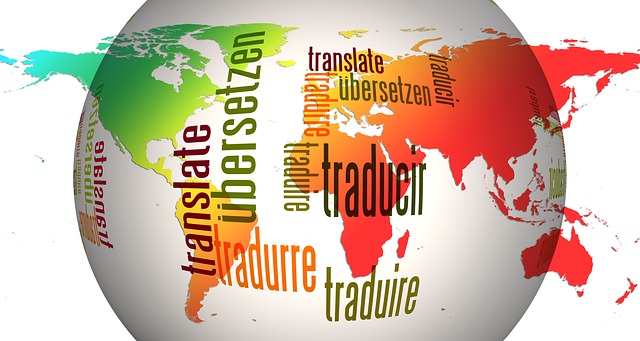Introduction to Übersetzen
“Übersetzen” is the German word for translation. It involves converting text or speech from one language to another. This process is more than just changing words. It requires understanding the context, culture, and nuances of both languages. Translation is vital in global communication. It lets people from different backgrounds understand each other.
History of Translation
Ancient Times
Translation has been around for thousands of years. The Rosetta Stone, dating back to 196 B.C., is one of the earliest examples of it. It had the same text in three scripts. This helped scholars understand Egyptian hieroglyphs.
Middle Ages
During the Middle Ages, translation was crucial for spreading religious texts. Monks translated the Bible from Latin to various European languages. This made religious teachings accessible to more people.
Modern Era
In the modern era, translation has expanded beyond religious texts. Übersetzen now includes literature, scientific papers, legal documents, and more. The printing press was invented in the 15th century. It made it easier to distribute translated works.
Types of Translation
Literary Translation
Literary Übersetzen translation involves translating books, poems, and plays. It requires creativity to maintain the author’s voice and style. Translators must know the culture. They need this to capture the essence of the original work.
Technical Translation
Übersetzen technical translation deals with scientific and technical documents. This includes manuals, instructions, and research papers. Precision is crucial here. Translators must be familiar with the specific terminology of the field.
Legal Translation
Legal translation involves translating legal documents such as contracts, laws, and regulations. Accuracy is vital, as any mistake can lead to serious consequences. Legal translators must have a deep understanding of legal terms and concepts.
Medical Translation
Medical translation includes translating medical records, research papers, and pharmaceutical information. Accuracy is critical, as errors can affect patient care. Medical translators need to understand medical terminology and concepts.
The Translation Process
Understanding the Source Text
The first step in translation is understanding the source text. This involves reading the text carefully and identifying its purpose and audience. Translators must grasp the context and nuances to ensure accurate translation.
Research
Next, translators conduct research. This includes looking up unfamiliar terms and understanding cultural references. Research helps ensure that the translation is accurate and relevant.
Drafting the Translation
After research, translators create a draft. This is the first version of the translated text. It may not be perfect, but it lays the foundation for the final version.
Revising and Editing
Revision and editing are crucial steps. Translators review their work, checking for accuracy and readability. They may ask experts or native speakers for help. They want to make sure the translation is right.
Proofreading
Proofreading is the final step. It involves checking for any remaining errors, such as typos or grammatical mistakes. Proofreaders ensure that the translation is polished and ready for publication.
Challenges in Translation
Cultural Differences
Cultural differences can make translation challenging. Some concepts may not have direct equivalents in another language. Translators must find ways to convey the same meaning. They must do this without losing the original context.
Idioms and Expressions
Idioms and expressions are often difficult to translate. They may not make sense if translated literally. Translators need to find equivalent expressions in the target language.
Technical Terminology
Technical terminology can be challenging, especially in specialized fields. Translators must ensure that they use the correct terms to avoid confusion.
Maintaining Style and Tone
Maintaining the style and tone of the original text is crucial. This is especially important in literary translation. Translators must balance accuracy with creativity. They do this to capture the essence of the original work.
The Role of Technology in Translation
Machine Translation
Machine translation involves using software to translate text. Examples include Google Translate and DeepL. While convenient, machine translation is not always accurate. It struggles with idioms, expressions, and cultural nuances.
Computer-Assisted Translation (CAT) Tools
CAT tools help human translators work more efficiently. They include features like translation memory and terminology databases. These tools help ensure consistency and accuracy.
Translation Management Systems (TMS)
TMS are software platforms that manage translation projects. They help coordinate tasks, track progress, and ensure quality. TMS are especially useful for large projects with multiple translators.
The Importance of Professional Translators
Accuracy and Quality
Professiona lÜbersetzen translators ensure accuracy and quality. They have the skills and experience to handle complex texts. Their expertise ensures that the translation is accurate and reliable.
Cultural Understanding
Professional Übersetzen translators have a deep understanding of both source and target cultures. This helps them convey the intended meaning accurately. They can navigate cultural differences and find equivalent expressions.
Specialization
Professional Übersetzen translators often specialize in specific fields. These include legal, medical, or technical translation. This ensures they have the needed knowledge. They can handle specialized terms and concepts.
Translation Ethics
Confidentiality
Confidentiality is crucial in translation. Übersetzen translators often handle sensitive information. They must keep this information confidential. They must not share it with unauthorized parties.
Accuracy
Accuracy is a fundamental ethical principle. Übersetzen translators must ensure that their translations are accurate. They must be faithful to the original text. Misleading or inaccurate translations can have serious consequences.
Cultural Sensitivity
Cultural sensitivity is important in translation. Translators must be aware of cultural differences and avoid offending the target audience. They should strive to convey the original message respectfully and accurately.
The Future of Translation
Advancements in Technology
Advancements in technology will continue to impact translation. Machine learning and artificial intelligence are making machine translation more accurate. However, people will still be needed. They will handle complex texts and cultural nuances.
Increasing Demand
The demand for translation services is increasing. Globalization and digital communication are driving this demand. Businesses are expanding internationally. So, the need for accurate translation will continue to grow.
New Fields
New fields, such as video game localization and multimedia translation, are emerging. These fields require specialized skills and knowledge. Translators will need to adapt to these new challenges and opportunities.



